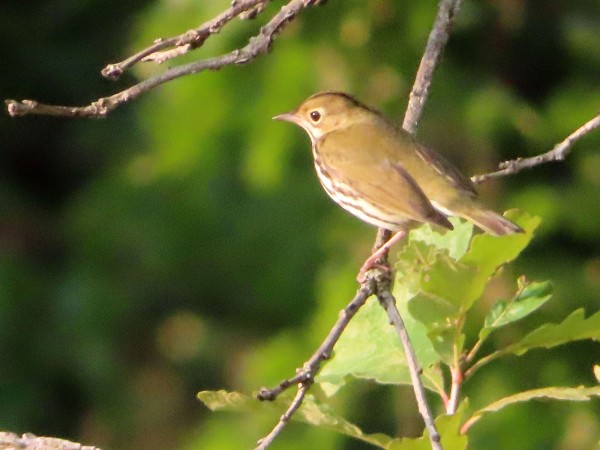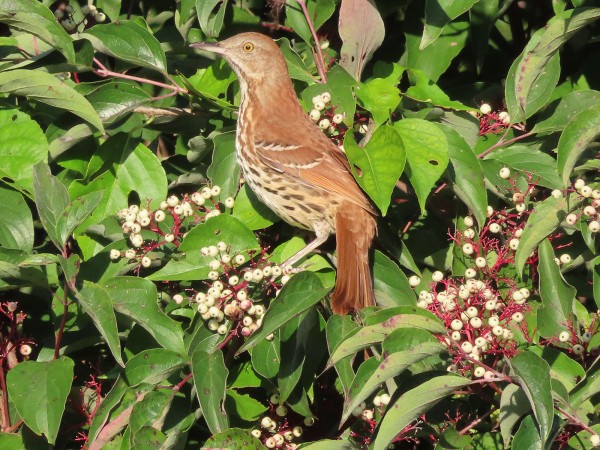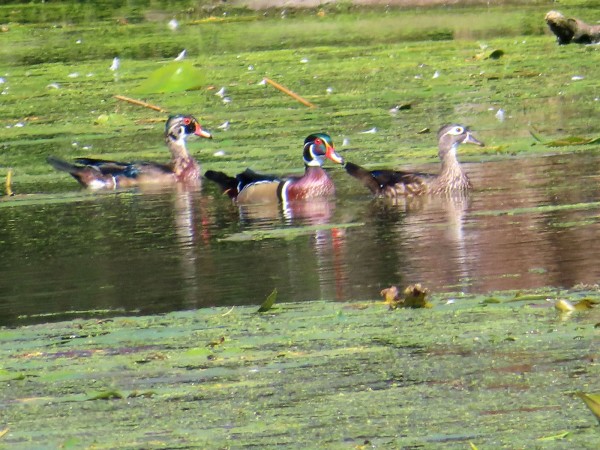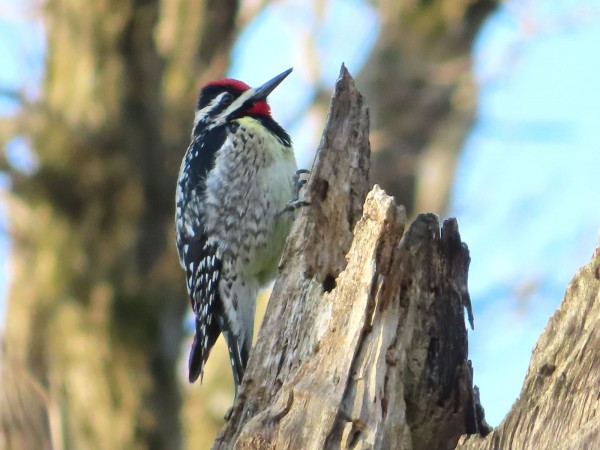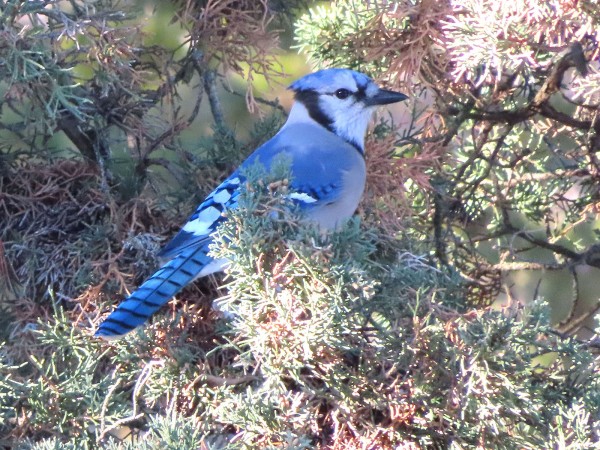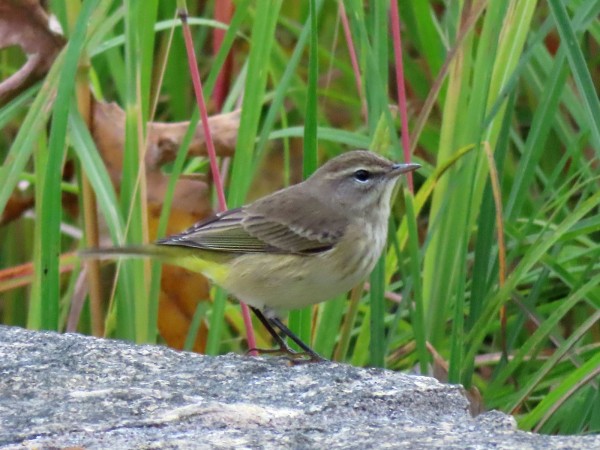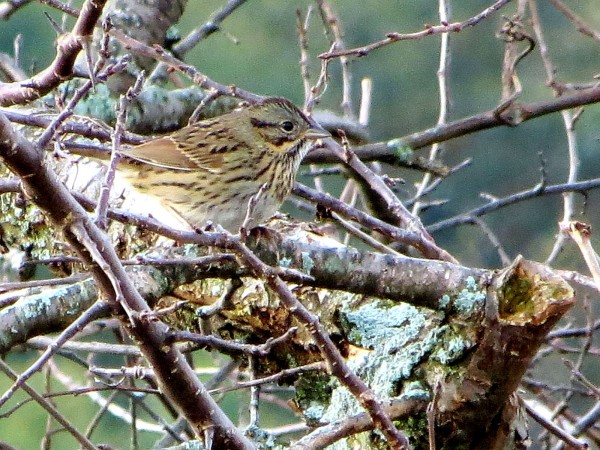Chuck's Birding Report #79
14 September - 20 September 2021
Dear fellow flock of birders,
The wildflowers in the Arboretum continue to go to seed so the actual number of blooming flowers has been reduced. There are still some Saw-tooth Sunflowers in bloom but the numbers are way down. The various species of asters are blooming well and the Gray Dogwoods still have some berries but some of the bushes have been stripped clean by the birds. The Virginia Creeper, a vine that can climb the trunks of trees and can reach to the tree tops, are beginning to turn red. They have berries for the birds too. The Black Walnut trees are dropping their nuts with a heavy sounding thud. Be careful while walking in the woods. Some walnuts fall on the roads, cars run over them and smash them with a loud pop. I saw crows and turkey run onto the road to hastily eat the nut meats. Oh yes, and more tree leaves are turning color and a few are even falling.
What’s happening in the bird world? Migration continues. Just before the bird walk started last week a couple of us saw about 100 Chimney Swifts fly over us heading south. That’s the most I’ve ever seen over the Arb. We also saw good numbers of Swainson’s Thrushes and Red-eyed Vireos feasting on Gray Dogwood berries. The Red-breasted Nuthatches are still around having arrived a week or two ago. One group observed a Cooper’s Hawk chase a Pileated Woodpecker. Again, that’s a new observation for all of us. Both groups saw a variety of warblers. One group saw a first of fall Ruby-crowned Kinglet. One group saw a rare, long look at an Ovenbird perched for a couple minutes in the leafless part of a small tree. I wish all warblers would do that. A photo of the Ovenbird is included.
As the week progressed I’ve been seeing more Brown Thrashers arrive in the Arb. They are stunning birds. They aren’t vocalizing this time of year. I miss that. They are ravenous Gray Dogwood berry eaters. A photo of one in the bush surrounded by the berries is included.
Good numbers of Northern Flickers are passing through right now. As they fly and as they perch and preen they flash the distinctive yellow shafts of their feathers. When they perch in pairs they also nod up and down and from side to side. I’m not sure what that means. Included is a photo of a Northern Flicker eating, you guessed it, Gray Dogwood berries. Note the bulge of berries in its neck. It was gobbling down berries as fast as it could.
I stopped by the southern end of Gardner Marsh to check on the Wood Ducks. Before this past week they were all in eclipse plumage. But this past week many have molted to their absolutely spectacular breeding plumage. I have included a photo showing three Wood Ducks. The male on the left is still in eclipse plumage while the middle male and right female have mostly, if not completely, changed to their breeding plumage. That’s what we normally see when they return in the spring. There were at least 40 Wood Ducks in the wider portion of the pond along Carver St.
Have you noticed that the American Goldfinch males are beginning to change color. I’ve seen some very blotchy males with some bright yellow patches and some olive colored patches. When completely molted into the fall/winter plumage they look very similar to the female goldfinches.
Another migrant I saw this past week were two Yellow-bellied Sapsuckers. They don’t remain in the Arb during the summer. It’s good to see them stopping by the Arb on their migration south. I’ve included a photo of a male sapsucker with red patches on both the forehead and the throat.
Has anybody else noticed that the Blue Jays are particularly noisy this fall. While most birds are relatively quiet in the fall the Blue Jays are constantly using one or another of their calls. I think these jays are just the ones passing through not our well-mannered locals. I’ve included a photo of one because that’s what they told me to do.
On my morning walk today the only warblers I saw were a pair of Palm Warblers near the council ring. One of them got up on the stones, walked along them and ate from the overhanging plants. It was only a few feet away from me before it realized I was there. I snapped a bunch of photos while it walked, ate and also bobbed its tail the whole way. It’s one of my favorite warblers because it’s easy to ID when it bobs its tail. A photo is included.
My last photo is of a Lincoln’s Sparrow. It is the first of several migrating sparrows that should arrive in the coming weeks. Watch for the sparrows especially along the paths that have grass seed heads hanging over them. Lots of Big Bluestem seed heads hang over the trails in West Curtis Prairie. A photo of the Lincoln’s Sparrow is included.
That’s the bird report for this past week.
Good health to all of you and good birding too,
Chuck

